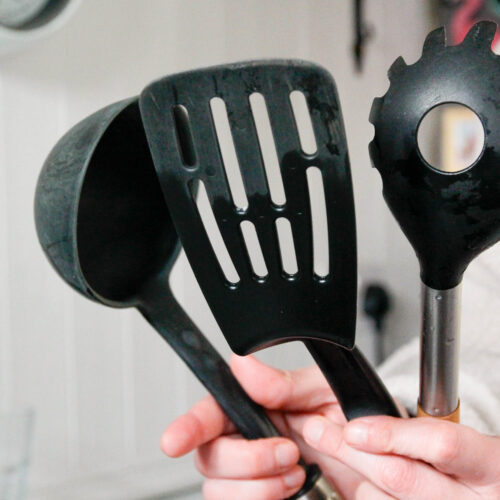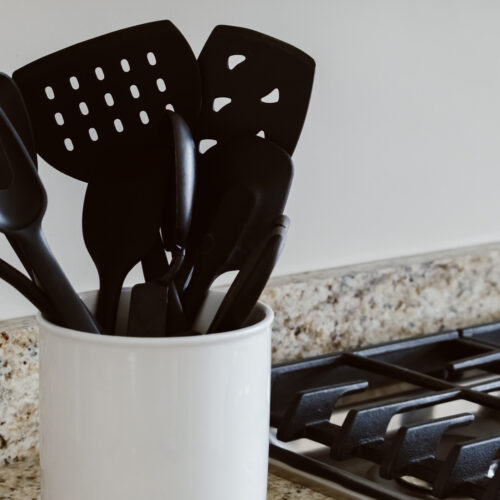I study toxic microplastics. Here's how I protect myself and my kids at home.

Tracey Woodruff
- Tracey Woodruff is an expert on microplastics, plastic-related chemicals, and their health impacts.
- She told Business Insider how she's been reducing microplastics exposure for her kids.
- She thrifts clothes made from natural fibers, hand-washes dishes, and shops at the farmers' market.
This as-told-to essay is based on a conversation with Tracey Woodruff, the director of the Program on Reproductive Health & the Environment at the University of California, San Francisco. She studies how microplastics and toxic chemicals impact fertility and child development. The below has been edited for length and clarity.
I've been working on reducing plastic in my life for a long time. I would say it's an iterative process, instead of trying to attack it all at one time.
Microplastics are in the air, they're in food, and they're in water. You can breathe them, eat them, and chemicals on them can also absorb into your skin.
When my kids were babies, science had not caught up. I used plastic baby bottles. Now, I would recommend glass.
This was before a lot of really important scientists and science were talking about: Oh wow, you know, there's chemicals in these plastics that could be hurting the development of my child.
I've studied the concerning health risks of microplastics
I co-authored a systematic review of studies on microplastics and three different types of health effects: reproductive, respiratory, and then effects on the gut and colon.
We found that microplastics were suspected to increase the risk of reproductive health effects, particularly for effects on sperm, as well as chronic inflammation and the potential to increase the risk of lung and colon cancer. It's not known that microplastics contribute to these health problems, but it's suspected.
Then there are the chemicals used in plastic — like phthalates, which can disrupt testosterone levels and affect fetal development.
Plastic production is projected to triple by 2060. There is certainly enough evidence to take action to prevent future harms.
None of the following tips are 100%, but they're how I'm trying to lower my family's plastic footprint.
Cooking at home
We eat a lot of food prepared inside our home. We make food with lots of fresh, organic fruits and vegetables for two reasons.

Tracey Woodruff
One is we know that plastic-related chemicals and microplastics can come from packaging that leeches into food. So it's really important to eat food that's not fast food or packaged food.
The second part is that nutrition improves your resiliency to the toxic effects of microplastics or other related toxic chemicals. Basically, it's going to be harder for toxic chemicals to impact you compared to, for example, if you're eating a lot of ultra-processed food.
It's really about your background risk status. Are you starting off as a healthier person? Or are you starting off as a person who has more underlying health conditions?
(This is not really microplastic related, but we focus on buying organic, because the science is clear that eating an organic diet can reduce your exposure to pesticides.)
Keeping plastic out of the microwave and dishwasher
We don't microwave food in plastic.
We also don't use dishwashing pods, because those are packaged in plastic. We used to wash plastic stuff like containers and lids in the dishwasher, but we do it by hand now.
It's basically the same thing as the microwave. Heat causes degradation of the plastic material, and it's super hot in your dishwasher.
Cleaning house
A lot of chemicals and microplastics hang out in dust.
We use a vacuum with a HEPA filter, and then wet mop and dust with a microfiber cloth. Those are things that don't stir up the dust when you're cleaning. Those are great ways to lower exposures to dust.
We probably dust once a week. I would say vacuuming and mopping happens every other week.
That's also why we take our shoes off before we come into the house — not tracking microplastics in from outside. One of the contributors to microplastics pollution is car tires, so that's going to be outside and you can track them around on your feet. There's also degrading plastic from garbage. We know that taking your shoes off can help.
Thrifting and swapping out plastic clothes
There's a lot of plastic used in clothes. So try and slowly switch over to natural materials like cotton and linen as opposed to polyester and rayon.
I also do a lot of thrifting alone and with my daughter. That's another way to reduce plastics too, is just to reduce your amount of purchasing new — which I know is hard. If your clothes are polyester or rayon materials, and you're buying them used, then they've already been made. It reduces the need to make another plastic garment and put it into the environment.
I don't do product endorsements, but there are websites now that you can use, like ThredUp. I love ThredUp.
Everything I'm wearing right now is actually thrifted, so there you go. And I think some of it's mostly cotton.
It took me time to build these habits
I didn't go out and do this all at once, but slowly over time. It didn't happen overnight. I want to emphasize that point. It happens over time.
Eventually, I could replace things or get things, and it just is a little less impact on the planet and my health.
I also want to say people should not feel guilty about their chemical exposures. I mean, they should do what they can to be healthy and to reduce them, but companies have pushed all these products. Even if you're trying to do the right thing, you can't control where they're used or other people using them. They're getting out and about in the environment, and we're getting exposed to them in so many places. I mean, think of car tires. We don't have control over that.
The real challenge, and the culprit, is that we really need the government to identify and remove these toxic chemicals from products before they come into our house and expose us.


